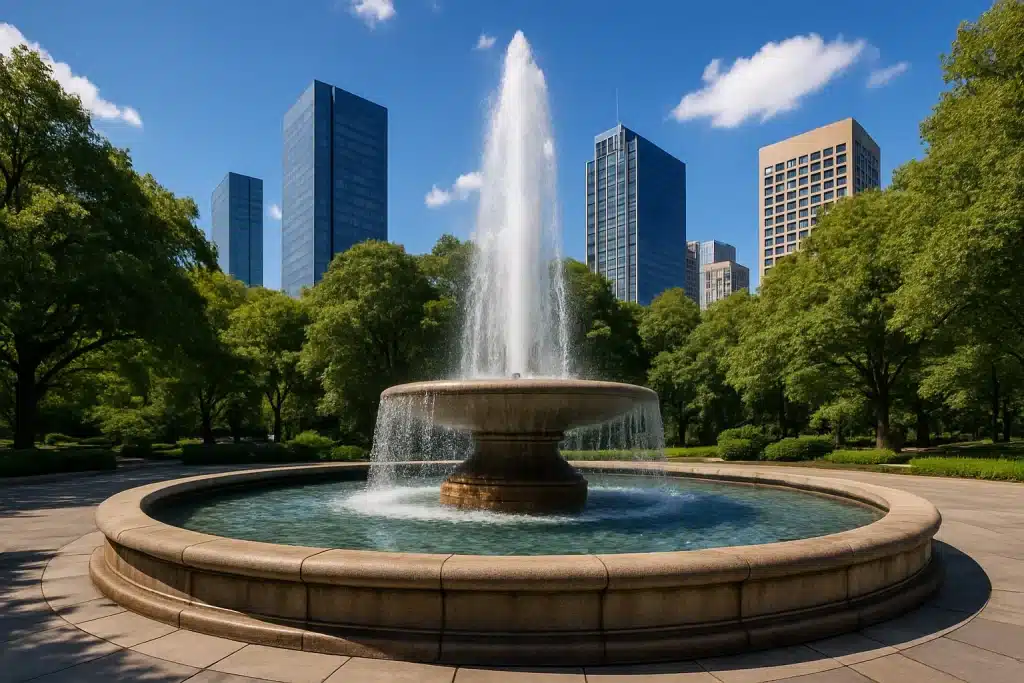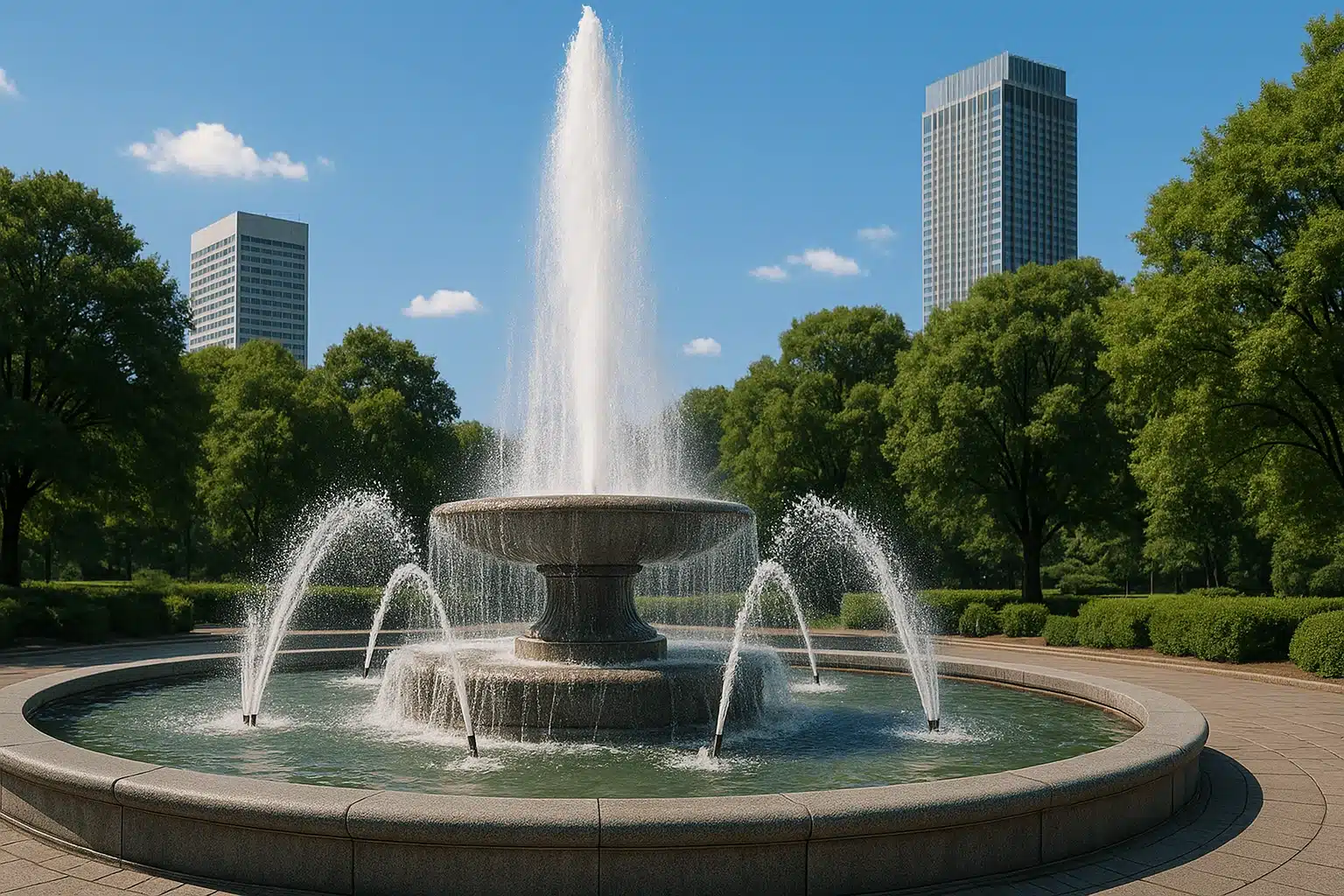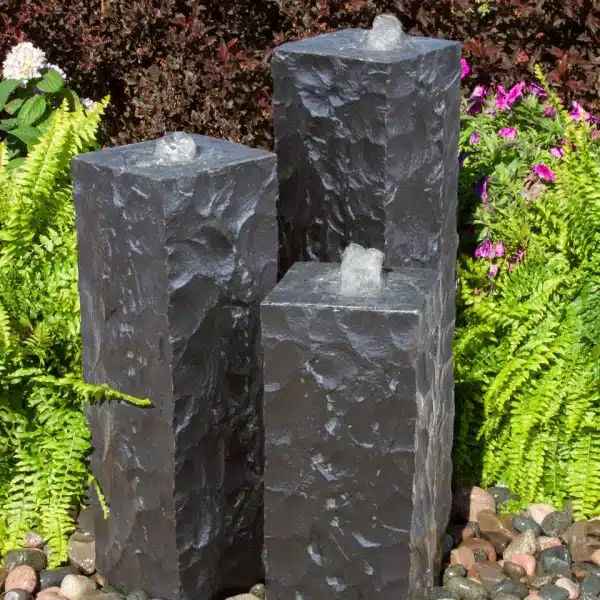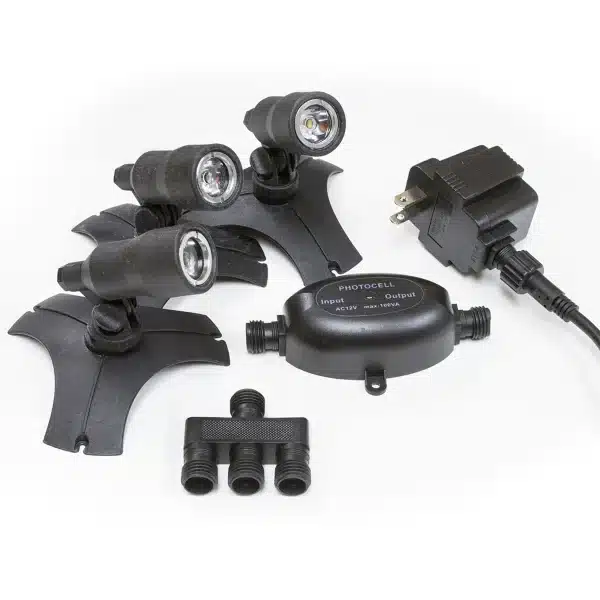Introduction
Fountains have long symbolized human creativity, cultural prestige, and urban beauty. From ancient aqueduct-fed displays to modern interactive installations, these water features remain embedded in our architectural and civic identity. Yet, in today’s era of climate urgency, fountains face heightened scrutiny. Droughts, water scarcity, rising energy costs, and public demand for sustainability have thrust them into the climate change debate. Are fountains wasteful relics in a warming world, or can they be reimagined as tools for resilience, education, and sustainable innovation?
This blog post explores the dual role of fountains in climate change conversations: the controversies surrounding their resource consumption and the opportunities they present when redesigned with sustainability in mind. With over 2,000 words, we’ll unpack myths, highlight innovations, and provide insights for architects, city planners, and homeowners navigating this debate.
Fountains in the Climate Spotlight
A Symbol Under Scrutiny
Climate change discussions often focus on water scarcity, energy consumption, and urban adaptation. Custom fountains, visible, often elaborate, and water-centric, become easy targets in these debates. Critics argue that in drought-prone regions, fountains represent luxury at the expense of necessity. This perception, while powerful, is not always rooted in fact.
Why They Spark Controversy
- Water Use Concerns: Fountains are perceived as “water wasters,” especially in arid climates. Images of fountains running during severe droughts can provoke public backlash.
- Energy Consumption: Pumping and lighting systems can consume significant amounts of energy if not designed with efficiency in mind.
- Urban Messaging: In a time when cities encourage conservation, visible water displays can send conflicting messages.
But the conversation is more nuanced. Many modern fountains are designed to recycle water, use minimal amounts, and even support cooling and biodiversity. Understanding these distinctions is crucial before labeling them as purely problematic.
The Numbers Behind the Debate
Water Usage Realities
Contrary to popular belief, most contemporary fountains operate on closed-loop systems, meaning the water continuously recirculates rather than being wasted. Studies suggest that a properly maintained fountain can use less water annually than an equivalent patch of lawn or traditional landscaping. For example, a medium-sized fountain might use only 2,000–5,000 gallons annually, while turf irrigation can exceed 30,000 gallons for the same footprint.
Evaporation and Loss
Yes, evaporation occurs, especially in hot climates. However, evaporation is often offset by water savings elsewhere. Recycled fountains with cover systems, mist-reducing nozzles, and water-level sensors can dramatically reduce losses. The challenge is ensuring these technologies are implemented consistently.
Energy Footprint
Energy consumption varies widely. Large fountains with lighting and complex jets may demand significant power. However, advances in solar pumping systems, LED lighting, and smart timers have substantially reduced footprints. The opportunity lies in scaling these practices broadly.
Fountains as Villains: The Controversial Narratives
1. “Luxury in a Time of Scarcity”
Public opinion often positions fountains as symbols of extravagance in cities grappling with drought. Headlines about cities banning ornamental fountains reinforce the notion that they are frivolous. These debates are especially heated in regions like California or Spain during prolonged dry periods.
2. Climate Injustice
Critics also raise questions of equity. Why should affluent neighborhoods enjoy decorative fountains while marginalized communities face water restrictions? The optics can deepen divides and fuel controversy.
3. Maintenance Failures
Even with closed-loop systems, poorly maintained fountains can leak or require frequent refilling. Negligence turns an otherwise efficient system into an ecological burden.
Fountains as Opportunities: A Reframed Narrative
1. Cooling Urban Heat Islands
One of the most underappreciated roles of fountains is their ability to cool urban microclimates. As cities heat up due to climate change, fountains provide evaporative cooling, reducing surrounding air temperatures by up to 5–10 degrees Fahrenheit. This effect can ease urban heat island intensity and support public health.
2. Educating the Public
Fountains serve as visual storytellers. Designers now use them to raise awareness about water cycles, climate resilience, and sustainability. Interactive displays can simulate drought cycles, promote conservation, or showcase renewable energy technologies.
3. Biodiversity Boosters
Fountains and water features attract birds, pollinators, and small mammals. When designed thoughtfully, they create microhabitats in urban areas otherwise dominated by concrete.
4. Sustainable Innovation
- Advances in technology position fountains as laboratories for sustainable design:
- Rainwater-fed fountains capture and reuse stormwater.
- Greywater fountains reuse water from non-potable sources like sinks.
- Solar-powered fountains eliminate grid dependency.
These innovations align fountains with sustainable city infrastructure, reframing them as assets rather than liabilities.

Case Studies: Fountains in the Climate Age
The Drylands Example: Phoenix, Arizona
Phoenix once considered banning ornamental fountains due to water scarcity. Instead, it promoted low-water designs and incentives for recycled-water fountains. The result: public fountains that showcase desert-adapted aesthetics while symbolizing the city’s commitment to resilience.
The Educational Model: Singapore
Singapore’s sustainable urban design includes fountains that double as stormwater retention systems. For example, the Bishan-Ang Mo Kio Park integrates fountains with rain gardens, combining beauty with flood mitigation.
The Renewable Pivot: Europe
Several European cities have retrofitted historic fountains with solar pumps and low-energy LEDs. These updates preserve cultural heritage while lowering environmental footprints, proving that tradition and innovation can coexist.
Architects, Designers, and the Path Forward
Sustainable Fountain Design Principles
For architects and urban planners, fountains can be opportunities if guided by:
- Closed-loop recirculation with smart water-level sensors.
- Alternative water sources (rainwater harvesting, greywater systems).
- Renewable energy integration (solar panels, wind-powered pumps).
- Evaporation control through nozzle selection, timers, and shading.
Dual-purpose design where fountains contribute to stormwater management or biodiversity support.
Messaging Matters
Equally important is how fountains are framed. Designers and municipalities must communicate their sustainability practices clearly. A fountain labeled as “rainwater-fed and solar-powered” sends a very different climate message than one perceived as decorative excess.
The Role of Policy and Regulation
Policy responses to fountains vary dramatically. Some regions impose outright bans during droughts, while others encourage innovation. Smart regulation can encourage opportunity-focused fountains by:
- Providing incentives for sustainable retrofits.
- Requiring fountains in new developments to meet water efficiency standards.
- Funding public education campaigns about recycled water systems.
Such policies not only address concerns but also position fountains as symbols of adaptive climate action.
Public Perception and Cultural Value
Fountains are not just functional objects, they are cultural landmarks. From Rome’s Trevi Fountain to Las Vegas’s Bellagio, they hold symbolic and tourism value. In climate conversations, their cultural weight complicates debates. Removing fountains entirely could erase heritage and diminish public spaces. Reimagining them with sustainability at the core preserves both function and meaning.
The Way Forward: Controversy or Opportunity?
The climate conversation around fountains will likely remain polarized. To some, they epitomize waste; to others, they represent resilience and innovation. The deciding factor lies in design, maintenance, and communication. A fountain that leaks potable water during a drought is indefensible. But a fountain that harvests rainwater, runs on solar, cools urban temperatures, and teaches conservation? That is an opportunity for climate adaptation.
Conclusion
Fountains are no longer immune from the climate change conversation. As visible and symbolic features, they naturally attract scrutiny. But this very visibility makes them powerful tools for modeling sustainability. When reimagined as climate-smart systems, fountains can shift from controversy to opportunity, offering cooling, education, biodiversity, and innovation. The key lies not in rejecting fountains outright but in designing and operating them with the planet in mind.






